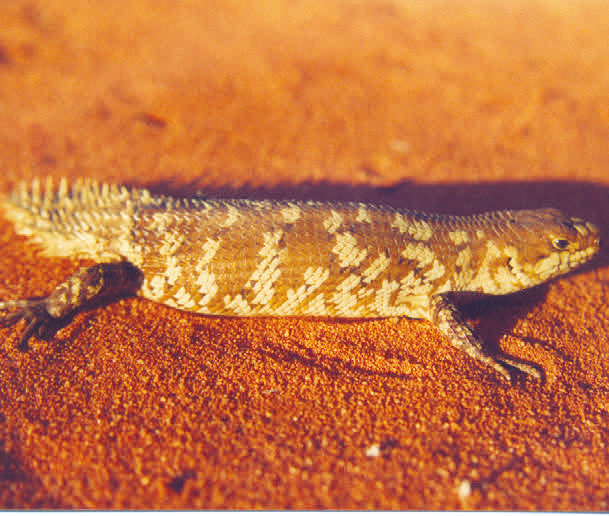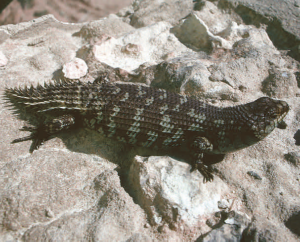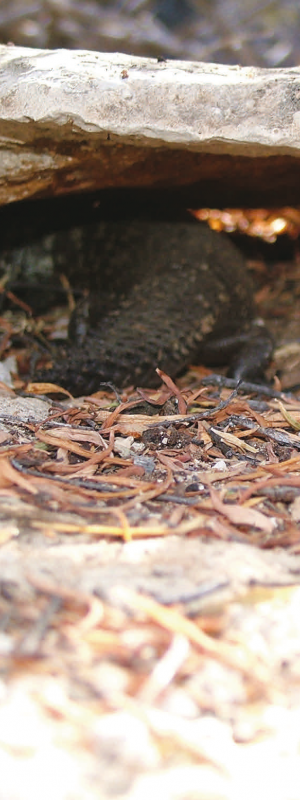Spiny-tailed Skinks
Western spiny-tailed skink
Egernia stokesii
Description

| Head-body 200mm |
Tail 100mm |
Spiny-tailed skinks are stout lizards with spiny tails, strong legs and long toes, all of which help the skinks grip rocky surfaces. Their thick skins are covered with rough-edged scales that minimise water loss. The colours of these skinks range from olive-brown to reddish-brown above with white or creamy-yellow underbellies.
Diet and habitat

Spiny-tailed skinks inhabit deep crevices and gaps under boulders in stony hills. They are also found in tree hollows and are active during the day. They catch spiders and insects with sticky mucous on their flat tongues. These skinks hunt and bask near the safety of their crevices and live in colonies of up to 16 lizards. Communal living is unusual for reptiles.
Breeding

| No. young 5 |
Lifespan 25 years |
These skinks bear live young, nourishing embryos via a placentalike organ. Young are generally born late in summer and are about 60mm long at birth. Studies show females and their young can identify each other by flicking their tongues. They reach sexual maturity after two years.
Distribution

There are three recognised subspecies of western spiny-tailed skink in Shark Bay — Egernia stokesii stokesii, E.s. badia and E.s. aethiops. The subspecies E.s. badia is also known as the gidgee skink. E.s. aethiops is only found on Baudin Island.
Status

E.s. badia and E.s. aethiops are listed as vulnerable. Potential threats include loss of habitat, feral predators, climate change and illegal collection for pet trade.
Fact sheet
SHARK BAY
World Heritage



